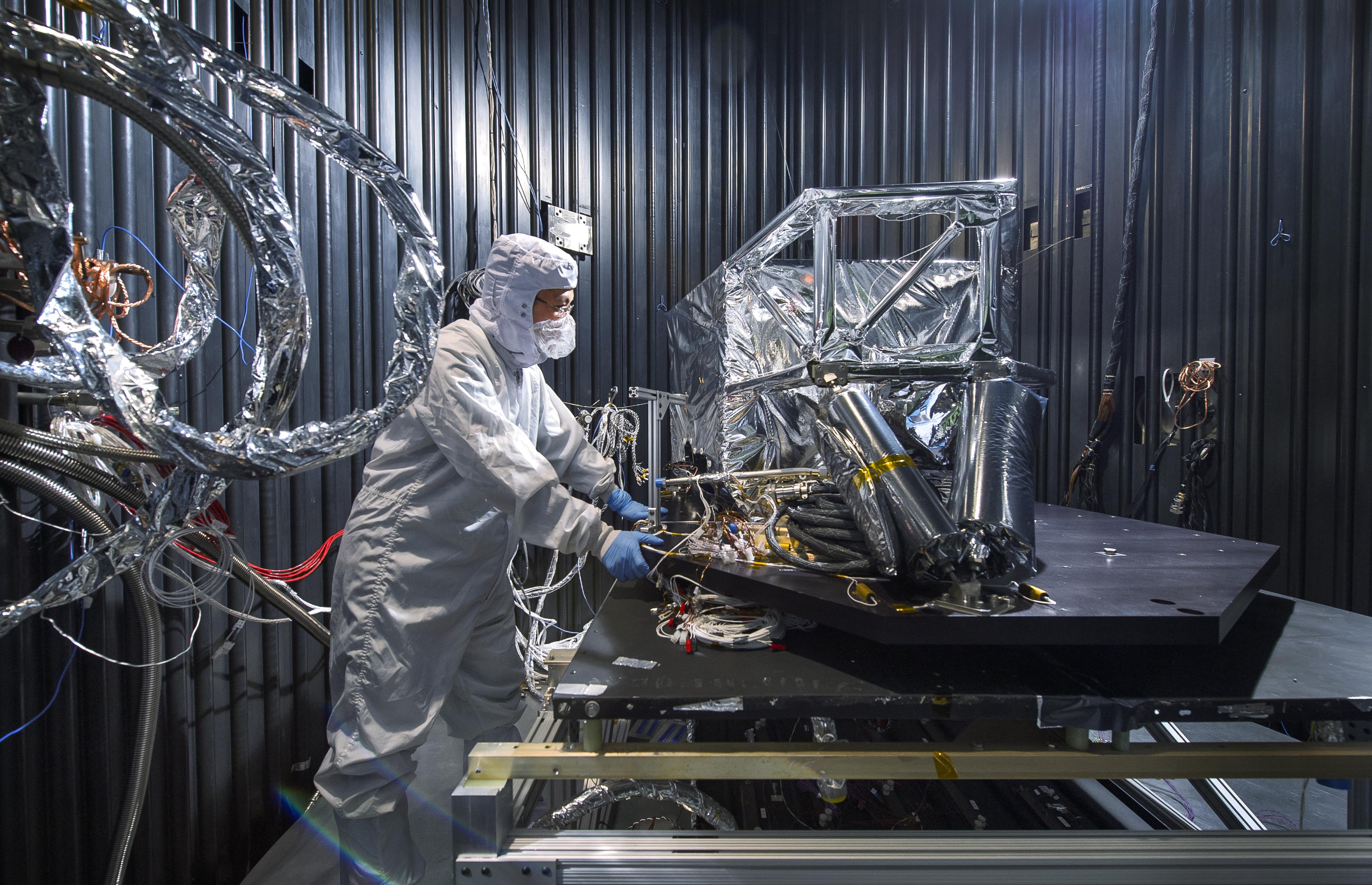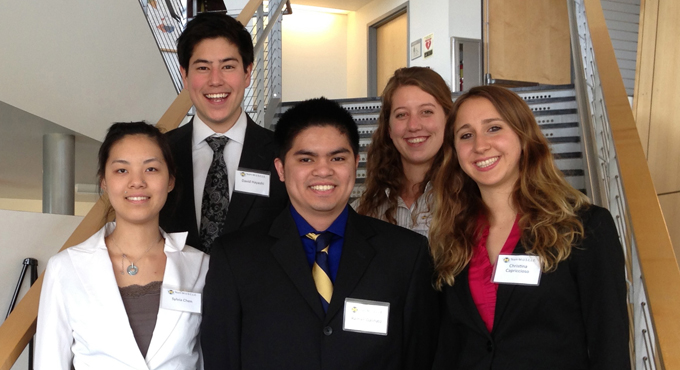
The Pentagon, headquarters of the Department of Defense. Photo Credit: Department of Defense/Master Sgt. Ken Hammond, U.S. Air Force
By Stephen Garber
What is it like to work at the Pentagon? From November 2012 to April 2013, I was fortunate enough to do a six-month “detail” there. I worked in a policy office within the Office of the Secretary of Defense, which is roughly analogous to NASA Headquarters as an agency-level organization that oversees military services and numerous smaller agencies. It was a rewarding experience where I learned every day. Not only did I learn a great deal about the two main policy issues I had in my portfolio, I also observed the different organizational culture at the Department of Defense’s (DoD) headquarters. Although the atmosphere wasn’t much different from what one might expect, I found some details interesting and potentially relevant to other organizations, including NASA.
One stereotype that turned out to have validity is that military people follow directions well, as opposed to many civilians who often don’t follow directions, even when it’s in our best interest. One morning I dropped off a prescription at the commercial pharmacy in the Pentagon. The pharmacist said she’d check if it was in stock and notify me. She left a voice message that afternoon, saying the medicine was in stock and that I should print out a coupon for a discount. When I listened to the voice message, I didn’t really understand what she meant about the coupon. Most people might have given up there to save themselves some headache, but I Googled the medicine and found a web site for it with a coupon for first-time patients. When I gave the coupon to the pharmacist, she explained that it allowed me to receive the medicine for free, saving me about $70. The pharmacist told me that in other locations where she’d worked, patients typically wouldn’t print such coupons, even though it was in their best interest. DoD people (and not just those in military uniforms) take direction well. Perhaps this illustrates a common foible of human nature outside the military—we are often too proud to accept advice.
Another well-known facet of military services is that service members rotate among assignments frequently. In addition, there is considerable turnover among civil servants and contractor staff. Perhaps that’s inevitable, since there are more than 20,000 people who work at the Pentagon. Not surprisingly, defined structures and work processes are key when personal institutional memory may be lacking. Cross-training government employees to do different kinds of work is usually mutually beneficial, allowing the organization to reduce single failure points and motivating and engaging employees. Given the constant churn of personnel at DoD, leaders there tend to view cross-training as more essential than at NASA.
When I first arrived at the Pentagon, I had a couple of weeks with a military officer on our team who I knew would soon retire. After he gave me two neat, chronologically organized binders with materials on a policy issue I would soon take over for him, I asked him for copies of his relevant electronic files. He responded that all his work files, like those of others in the office, were stored on a shared drive with a file structure that turned out to be easy to understand. Before my detail, I had made sure to copy all my NASA work files to a shared drive, but many of my file folders were arbitrarily named. At least in the Office of the Secretary of Defense Space Policy, the electronic file structure was self-evident and thus fairly straightforward for employees to find needed documents. When I returned to NASA, one of the tasks my boss asked me to work on was pulling together documentation for our various contract history projects in a way that all members of our office could easily access. Because people often stay for long periods of time in their jobs at NASA and thus acquire substantial detailed subject-matter expertise, if a subject-matter expert is out of the office for any reason it sometimes becomes a single point of failure. We at NASA likely could do better in terms of “knowledge management” to avoid this problem.
The fact that people move around so much at DoD, perhaps combined with respect for hierarchy, yielded another notable organizational culture facet: a strong implicit emphasis on teamwork. While working on various aspects of two space-policy issues, I interacted with people from a variety of organizations who brought different perspectives and expertise. Underlying our interactions was the notion that regardless of where we worked or our specific backgrounds, we each had something to contribute to the issues at hand. Thus everybody worked together cooperatively. I didn’t witness any bureaucratic “steamrolling” or people trying to pull rank, presumably because the hierarchy was clear. Also, people rarely asked for others’ personal perspectives; we all represented a particular office or institutional perspective. At NASA, I’ve seen more latitude for individual personalities and ways of doing business, which can be a pleasant form of teamwork or it can be dysfunctional.

An illuminated American flag is displayed at the Pentagon near the spot where American Airlines Flight 77 crashed into the building on September 11.
Photo Credit: Department of Defense/Petty Officer 1st Class Brandan W. Schulze, U.S. Navy
Relatedly, virtually everybody I encountered at DoD was respectful of other people. This is hardly a surprise, but the manners I saw exhibited on a daily basis were instructive. In an orientation class, one presenter cautioned that we should not refer to a superior by his or her first name in casual conversation unless we’d feel comfortable addressing that superior by first name to his or her face. Two colleagues refused to call me anything but “sir” even after I suggested a few times that we call each other by our first names. (I suppose I technically outranked them, although I don’t think they knew that.) I began calling others at work “sir” or “ma’am” and found this encouraged me to be polite, especially when dealing with frustrating customer-service situations outside work. This was a change of pace from NASA, where the administrator, a retired general, asks employees to call him by his first name. Presumably long ago, NASA Administrator Charles Bolden wisely adapted to NASA’s more informal culture, but I’ve always addressed him as “sir” when I see him in the hallways.
Although there was good-natured teasing among my team at DoD, people rarely talked disparagingly about a person who wasn’t in the room. Initially, I didn’t consciously realize this admirable aspect of DoD’s culture. Even at NASA, with a deserved reputation as a “can do” organization, sometimes we waste emotional energy and time complaining about people or things we don’t like. Not everything was or is perfect at DoD, but I find focusing on the positive to be a helpful tactic in many practical ways.
Another way in which mutual respect is demonstrated at DoD is people don’t check their phones during meetings. The reason for this is simple: such portable electronic devices are prohibited from almost all offices and meeting rooms in the Pentagon for security reasons; this has the added benefit of ensuring respectful attention to speakers.
DoD employees multitask in another way, however: using classified and unclassified systems almost simultaneously. Everybody has at least a secret clearance and uses at a minimum two separate computers: one classified and one unclassified. For security reasons, these computers connect to separate systems. Thus everybody has at least two e-mail addresses. Since most of my work was on the unclassified system, I could ask colleagues who sent me messages on the classified network to let me know via phone or unclassified e-mail to check my secure e-mail. Conversely, I asked my boss to give a specific colleague, who spent most of his time on a highly classified system to which I didn’t have access, a heads up when I’d sent him an unclassified e-mail. While a little cumbersome, this informal system sufficed to keep work flowing in separate channels. Because the vast majority of NASA employees, even those with security clearances, do not have such computer setups, this arrangement isn’t usually necessary at NASA.
Another aspect of my experience that I keep coming back to is that policy has a significant footprint at DoD. The Undersecretary of Defense for Policy oversees perhaps one thousand people who are divided into various geographical and functional offices. The Space Policy Office, a group of about twenty people divided into three branches, has significant influence despite its relatively small size, and it is only one of several DoD players in space policy. There is another office called the DoD Executive Agent for Space that also deals with space-policy issues. Then there are other people in a number of staff offices who work on space policy from various angles (e.g., various air force components, legal, and procurement). DoD is much larger than NASA, so it makes sense that there are more people working on space-policy
issues at the Pentagon.
In practice, only a small number of people do policy analysis at NASA, and these people are forced to cover many issues. In fact, the term “policy analyst” seems to have different meanings at DoD and NASA. I was heartened to see the number and range of DoD people thinking about the complex space-policy issues that both civilian and national security (and often commercial as well) space communities face. Sometimes my head would spin a bit after sitting in on discussions about internal DoD directives or DoD perspectives on national space-policy issues, as it seemed people were debating how many angels would fit on the head of a pin. Yet people had time to think through the issues, and people in the field paid attention to the carefully crafted language in these policies. Simply put, words matter. Ideally it’d be nice if there were at least a few more NASA policy people at Headquarters to help think through similar various perspectives.
Another facet of DoD’s organizational culture that was apparent is there seems to be more administrative support at the Pentagon than at NASA Headquarters, and most of these positions are filled by contractors. This may seem like a luxury to NASA people who are accustomed to more minimal support, yet these highly capable administrative professionals increased the efficiency of workflow. In particular, schedulers made arranging meetings vastly easier and freed the “principals” to do other things. More administrative support seems like a relatively small investment that’s worth it whenever possible because it yields great benefits in operational efficiency.
As a sidelight, I was also impressed with one administrative-support contractor who helped me numerous times and basically ran the office. He had a terrific “let’s get it done” attitude. Although he expressed interest in working at NASA, this former sailor was awarded with a fairly high-level civil-service job in another DoD office. He is truly a standout who typifies the best of enthusiastic, capable employees at both DoD and NASA. Of course, leadership and management are all about the people. Beyond the exciting, important missions that NASA and DoD have, an organizational culture focused on setting the conditions for employees to thrive makes all the difference. Reflecting on the different natures of the two organizations and missions, it is heartening to see that both DoD and NASA strive to take care of their people. We have much to learn from each other.
The Pentagon, headquarters of the Department of Defense.
Featured Photo Credit: Department of Defense/Master Sgt. Ken Hammond, U.S. Air Force
Related Links
About the Author
 |
Stephen Garber has worked in the NASA History Program Office for a number of years and recently completed a six-month detail at the Department of Defense. Read more about his experiences at the Pentagon and during a six-month detail in NASA’s Office of Legislative and Intergovernmental Affairs in the 2013 third-quarter issue of NASA History News and Notes at history.nasa.gov/histnews.htm. |
More Articles by Stephen Garber
- Managing History: A Practicum (ASK 17)









